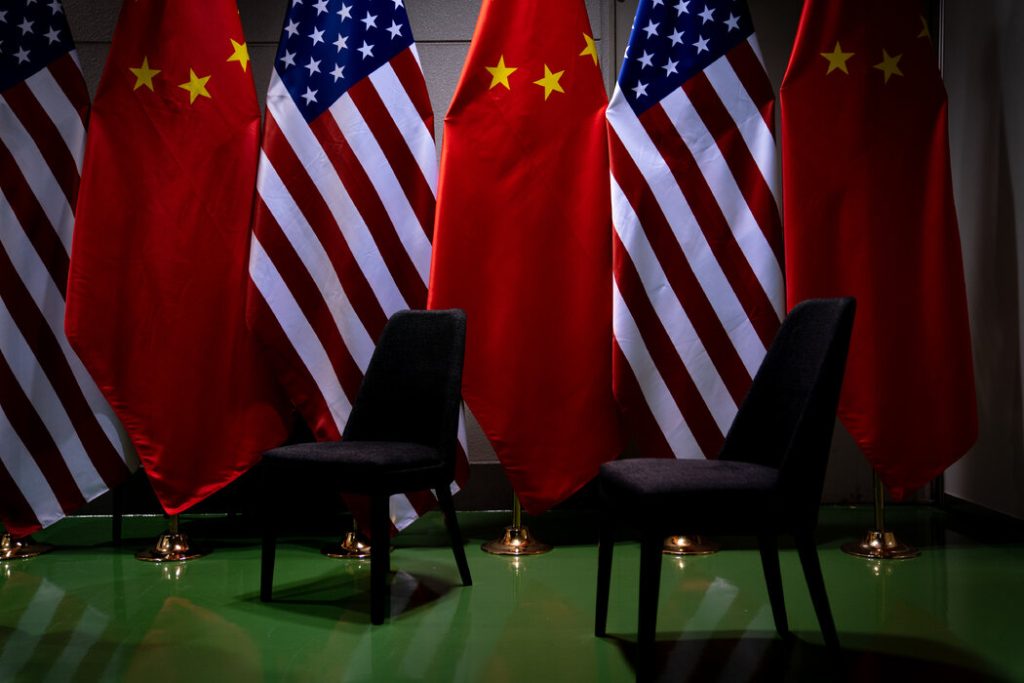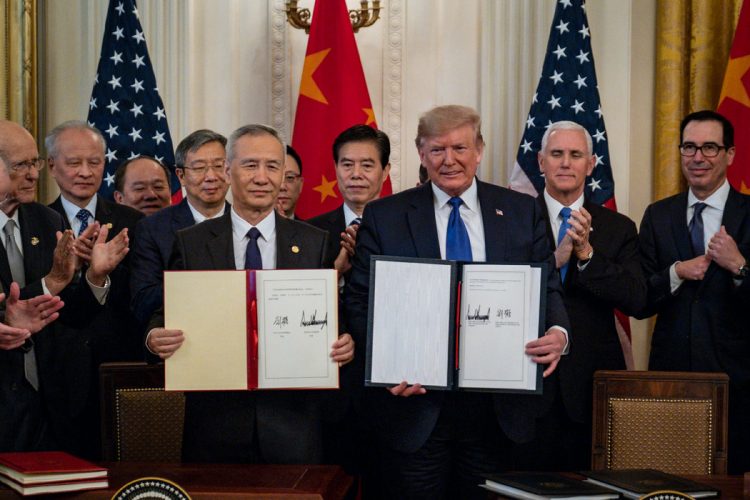The relationship between the United States and China has evolved into one of the most significant and complex geopolitical issues of the 21st century. Over the past few years, trade tensions between these two economic giants have reached unprecedented levels, affecting not only their own economies but also global supply chains. The imposition of tariffs, trade barriers, and the ongoing rivalry in technology, intellectual property, and strategic industries have sent ripples through global markets. As tensions continue to rise, the impact on global supply chains becomes an increasingly important issue for businesses, governments, and investors alike.
This article delves into the escalating US-China trade tensions, explores how global supply chains have already been impacted, and examines how future developments in the trade conflict could shape the world’s interconnected economic system.
1. Understanding the US-China Trade Tensions
Before delving into the effects on global supply chains, it’s important to understand the underlying factors driving the trade conflict between the U.S. and China.
1.1 Trade Imbalances and Tariffs
A significant factor contributing to the trade tensions between the U.S. and China has been the persistent trade imbalance, where China has long run a surplus with the United States. The U.S. has repeatedly criticized China for unfair trade practices, including intellectual property theft, forced technology transfers, and government subsidies for state-owned enterprises. In response, the U.S. imposed tariffs on Chinese goods, starting in 2018, with the aim of reducing the trade deficit and forcing China to change its trade policies.
China, in turn, retaliated by imposing tariffs on U.S. goods, particularly agricultural products and high-tech items. These tariffs have had a direct impact on the cost of goods for both countries and on the broader global economy. While a partial trade agreement, the “Phase One” deal, was reached in early 2020, many of the structural issues—such as intellectual property concerns, market access, and industrial policy—remain unresolved.
1.2 Technological Rivalry and National Security Concerns
In addition to trade imbalances, another key issue fueling the conflict is the technological competition between the two nations. The U.S. has expressed concerns about China’s growing dominance in emerging technologies such as 5G, artificial intelligence (AI), and semiconductors. The U.S. government has also accused China of using its technological capabilities to engage in cyber espionage and to threaten national security.
This rivalry has led to actions such as the Huawei ban by the U.S. and restrictions on Chinese technology firms’ access to key components, like semiconductors. These moves have had a profound impact on global supply chains, particularly in the tech industry, where the U.S. and China are key players in the production and consumption of high-tech components.
1.3 Strategic Industries and Decoupling
As tensions rise, there is increasing talk of “decoupling”—the process of the U.S. and China separating their economies in strategic sectors. This involves efforts to reduce dependency on each other in critical industries like technology, defense, pharmaceuticals, and rare earths. The decoupling narrative suggests that each country may seek to become more self-reliant in key sectors, resulting in a shift away from global supply chains that are heavily dependent on both countries.
2. Immediate Impacts on Global Supply Chains
The escalating trade conflict between the U.S. and China has already started to disrupt global supply chains, creating new challenges for businesses that rely on the two nations for raw materials, intermediate goods, and finished products.
2.1 Disruption in Manufacturing and Trade Flows
One of the most direct effects of the trade war has been the disruption of global manufacturing and trade flows. China, as the “world’s factory,” plays a central role in the production of a wide range of goods, from electronics to textiles, machinery, and consumer products. The U.S. tariffs on Chinese goods increased costs for American companies that depend on cheap Chinese imports. This, in turn, led to price hikes on consumer products in the U.S. and pushed companies to reconsider their supply chain strategies.
- Supply Chain Shifts: Many companies have started moving their manufacturing bases from China to other countries in Asia, such as Vietnam, Thailand, and India, in order to avoid the tariff burden. This process, known as “China plus one” strategy, aims to diversify risk and reduce dependence on Chinese production.
- Logistics Bottlenecks: The shifting of manufacturing from China to other countries, combined with disruptions in shipping and logistics due to trade tensions, has created bottlenecks in global supply chains. The port congestion in the U.S. and disruptions in the South China Sea have further exacerbated these issues.
2.2 Higher Costs for Raw Materials and Commodities
Both the U.S. and China are major consumers of raw materials and commodities. The tariffs and trade barriers imposed during the trade war have led to an increase in the cost of goods that rely on these raw materials. For example, Chinese tariffs on U.S. agricultural products have hurt American farmers and have led to a higher cost for food production worldwide.
- Commodity Prices: Global commodity prices, particularly for metals like steel and aluminum, have fluctuated as a result of trade restrictions. China is a major importer of these commodities, and any disruption in trade flows affects the price stability of raw materials that are crucial for industries around the world.
- Supply Shortages: Industries such as automotive manufacturing and consumer electronics, which rely heavily on critical raw materials like semiconductors, have faced shortages due to disruptions in trade between the two countries.
2.3 Impact on Global Tech Supply Chains
The technology sector has been one of the hardest-hit areas due to the trade tensions between the U.S. and China. The U.S. government’s restrictions on Chinese companies, particularly Huawei and other tech giants, have disrupted the flow of semiconductors and other high-tech components across borders. This has had a ripple effect on global supply chains, especially in industries such as smartphones, laptops, and other consumer electronics.
- Semiconductor Shortage: The ongoing semiconductor shortage is a direct result of the trade tensions, as U.S. sanctions on Chinese tech companies have caused a disruption in the global supply of chips. With both the U.S. and China competing for access to cutting-edge technologies, companies in other parts of the world, particularly in the European Union and Asia, are now facing difficulties in acquiring components.
- Diversification of Supply Sources: Companies that rely heavily on Chinese technology suppliers are increasingly exploring alternative sources for components, such as South Korea, Taiwan, and Japan. While these countries have well-established tech industries, they do not have the same capacity to scale production as China, which leads to potential delays and higher costs.

3. Long-Term Impact: The Future of Global Supply Chains
The ongoing trade tensions between the U.S. and China, coupled with the broader geopolitical environment, are likely to continue reshaping global supply chains for the foreseeable future. Several key trends are already emerging:
3.1 Increased Reshoring and Nearshoring
In response to trade tensions and the risks of relying too heavily on China, many companies are reconsidering their global supply chain strategies. This has led to a trend of reshoring (bringing manufacturing back to domestic markets) and nearshoring (moving production closer to home).
- Reshoring: Some U.S. and European companies are bringing manufacturing operations back to their home countries, seeking to reduce dependency on China and lower the risk of trade disruptions. This shift is particularly evident in industries like automotive manufacturing, pharmaceuticals, and consumer electronics.
- Nearshoring: To avoid the costs and risks associated with offshore manufacturing in China, many companies are moving their production to countries that are geographically closer and have lower labor costs, such as Mexico, Vietnam, and Poland. This helps companies mitigate the risks of tariffs and shipping delays.
3.2 Technology Decoupling and Innovation in Supply Chains
The technological decoupling between the U.S. and China will likely accelerate the development of new supply chains centered on innovation. Both countries will focus on securing their technological ecosystems, with the U.S. investing in domestic semiconductor manufacturing and China focusing on self-sufficiency in critical technologies like 5G and AI.
- Semiconductor Manufacturing: Both the U.S. and China are likely to invest heavily in building domestic semiconductor manufacturing capacity, with the U.S. passing legislation such as the CHIPS Act to incentivize domestic production. This will reduce dependency on foreign suppliers and potentially mitigate the impact of future trade tensions.
- Alternative Supply Chains: As the world’s reliance on Chinese manufacturing decreases, alternative supply chains are expected to grow, particularly in countries that offer competitive advantages in terms of labor costs, infrastructure, and political stability.
3.3 Geopolitical and Regulatory Risks
The ongoing trade war highlights the need for companies to be more aware of geopolitical risks when managing their supply chains. Companies are likely to invest more in supply chain risk management, assessing political, economic, and regulatory risks more carefully when choosing suppliers and manufacturing partners.
4. Conclusion: Adapting to a Changing Landscape
The escalating US-China trade tensions have already had a profound impact on global supply chains, disrupting manufacturing, raising costs, and prompting companies to reconsider their sourcing strategies. In the long run, businesses will need to adapt to a world where geopolitical tensions, trade barriers, and technological rivalries may continue to shape the global economic landscape.
While some industries will benefit from the shifts in global supply chains, others will face significant challenges. As companies look to mitigate risks, they will increasingly diversify their supply sources, invest in new technologies, and explore opportunities for reshoring and nearshoring. Understanding and adapting to these changes will be crucial for businesses seeking to thrive in an uncertain and increasingly fragmented global economy.


















































